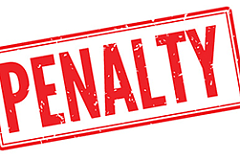 Let's face it, the cost of living is never going to stop increasing. Despite the epidemic's depressing business activity, last year, we saw an inflation rate of 1.23 percent and we’re currently experiencing higher inflation rates. Moreover, in some locations, the cost of housing is soaring at double digit rates.
Let's face it, the cost of living is never going to stop increasing. Despite the epidemic's depressing business activity, last year, we saw an inflation rate of 1.23 percent and we’re currently experiencing higher inflation rates. Moreover, in some locations, the cost of housing is soaring at double digit rates.
So, what does this mean for your business? Well, if your goal is to make a living, it means you'll have to raise prices to keep up.
Of course, raising your prices can be a tricky procedure. From knowing how much to bump your price to preventing dedicated customers from jumping ship, there's a lot to consider.
While it would be easier to simply avoid these problems and leave things the way they are, your profit margins are only going to decrease as the rest of the world raises their prices.
If you're looking to raise prices without losing customers, we've got your back. Follow along to learn everything you need to know when it comes to how to increase revenue in an ever-changing world.
Top Signs It's Time to Raise Prices
Before we jump into raising your prices, you'll first need to determine when and why it's time to increase your cost.
Whether you offer a service or a product, the principles remain the same.
1. Your Close Rate is High
If your close rate is above 80 percent, you may be thinking you're right on track. On the contrary, a close rate this high is actually an indication that you're giving your customers more than enough bang for their buck.
An ideal close rate should be around 75-80 percent. While it seems counterintuitive to aim for a lower close rate, the fact is that a close rate higher than this really just means you are under-selling yourself.
Instead of offering the lowest price out there, raising your price can bring you in more sustainable income and send a message of professionalism and authority to clients.
2. You Haven't Raised Prices in a While
As we mentioned above, the cost of living is continually rising. This probably means the cost of your materials or your staff's wages have been increasing as well.
[quotes]At the end of the day, everyone needs to be able to make a profit to survive.[/quotes] With this in mind, if it's been a while since you raised your prices, you're probably more than justified in approaching the subject.
While you may lose a few clients and customers along the way, keeping your rates the same for too long sends a message to your audience that you aren't keeping up with the times.
3. Your Prices are Well Below Competitors
Have a look at your closest competitors. [quotesright]Are your prices well below the industry standard? [/quotesright]
While undercutting the other guys can be a benefit, having too much of a gap between you and your competition can actually make you look inexperienced and unqualified.
Remember, your perceived value goes a long way to landing loyal customers, so don't be afraid to reflect your worth in your pricing.
How to Raise Prices Without Losing Customers
Now that you've determined it's time to make a change in your pricing schedule, it's time to act.
Here are a few simple steps to help you tackle price increases while keeping your customers happy and loyal.
Research Your Increase
Don't just pick a new price out of thin air. Take some time to research your competitors and get to know the going rate within your unique industry. You want your new prices to be competitive but not too far off of the industry standard.
Using hard data is the best way to approach any business change – especially when customers are involved.
You may discover that your price increase only needs to be a small percentage or perhaps you've got a big jump to make. [quotesright]If you plan to raise your prices by a substantial amount, consider taking this in phases to avoid angry customers and contract cancellations. [/quotesright]
More about this later.
Don't Be Sneaky
[quotes]If you're thinking your customers won't notice if you bump up your price tag - you're wrong.[/quotes]
Instead of trying to be sneaky about your increase, let your customers know ahead of time so there are no surprises on their next bill. In fact, you may find it more beneficial to increase your price for new clients first and slowly transition your existing accounts to match.
When you let your loyal customers know your prices have gone up but you are on a mission to make the transition a smooth as possible for them, they'll appreciate your efforts and may even place a higher value on your services.
A little respect for your clients goes a long way to retaining accounts and even earning new ones.
Explain Your Reasons
Wondering how to tell your customers you are raising prices? It's probably easier than you think.
When it comes down to it, everyone understands the rising cost of business and for the most part, no one will be upset with you for trying to make a living.
[quotes]Give your customers plenty of notice when the change is coming and take the time to let them in on the reasons behind your increase.[/quotes] Perhaps your materials are now more expensive or an increase in demand has caused you to need a bit more help to deliver your customers the results they deserve.
Be as transparent as possible without outright telling your customers you'd like to make more profit. They'll appreciate you letting them in on the why and will have more understanding for the coming change.
Don't Apologize
While it can be tempting to chuck in an apology at the end of your increase notice, it's incredibly important that you don't include this statement.
[quotesright]Apologizing for your price increase is as good as telling your customers you aren't worth the extra cost. [/quotesright]
Instead, practice confidence in your brand by thanking them for their continuing business and expressing your excitement to continue to offer them the best products and services possible.
After all, you have absolutely no reason to apologize for your growing business!
Expect Change
At the end of the day, you'll win some and you'll lose some.
While it can be heartbreaking to lose a loyal client, you simply can't afford to keep your prices low forever. This means you'll likely lose a few customers along the way. Fortunately, you'll also gain some customers who may have never considered you before.
[quotes]A price increase goes hand in hand with increased perceived value.[/quotes] That means your new price point now opens you up to a whole new group of consumers looking to invest a little more.
We know change can be scary, but don't avoid increasing prices out of fear of losing a few accounts. Your new price and audience will more than make up for the loss.
How to Increase Revenue
While a price increase is inevitable, there are a few ways you can approach the process to make it more digestible for your customers. Here are a few techniques you can use to keep your customer happy through the change.
Add Fees
If your price increase is related to materials or shipping costs, use this to reflect your new prices.
Instead of hiking up your base price, add on fees and adjustments in accordance with industry norms. Rather than eating the cost of shipping, add it on to recoup the cost.
Do It in Stages
If your research revealed that you've got a long way to go to catch up to the industry standard, the best way to approach your increase is in stages. [quotesright]By rolling out increases on a regular schedule, your customers will have a slower introduction to the change. [/quotesright]
Beyond this, they'll begin to expect the change and plan for it ahead of time. This will take the bite out of your increase announcements and make it more manageable for smaller clients to continue to use your services.
Reward Loyalty
If you've got clients on contract, you may want to consider keeping their accounts at your previous price.
[quotes]This will ensure you don't lose clients while on the hunt for new ones.[/quotes] Even if you can't keep these prices the same forever, the extra consideration for your loyal clients will encourage them to stick around when that price increase eventually does include them.
Add Value
If you're having trouble justifying your increase, consider adding extra value to make up the difference.
This could include anything from switching to sustainable packaging to offering an extra perk for service-based businesses.
Create a Discounted Offer
While you transition your pricing schedule, consider offering a discounted offer that matches your old prices. [quotesright]By cutting out a few services or even decreasing product sizes, your existing customers have an option to continue with you at the price they are familiar with. [/quotesright]
Of course, since your new price now includes an added value that they won't get in the discount offer, it'll continue to grow and soon overtake those discount customers.
How to Increase Revenue and Grow Your Businesses
Now that you know the secret for how to raise prices without losing customers, it's time to put your plan into action. From launching your research to sending out that increase notice, we're confident you'll love the end result.
Want to explore further?
Want to know more about raising your prices or have questions about anything we've covered in this article? Questions? Get in touch and let's set up a time to talk. Brian Tracy USA: 877.433.6225 Email Me














